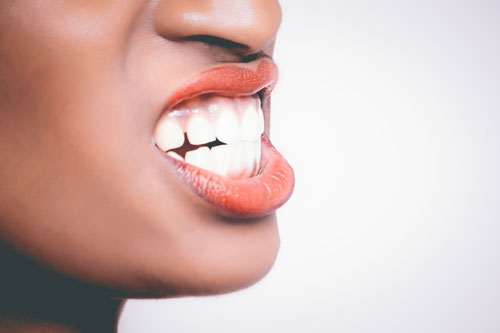
Health Risks of Sleep Apnea
March 13, 2018
4 Innovative Approaches to Manage Your Night-time Dry Mouth
May 16, 2018 The American Dental Association recommends cleaning between your teeth daily with an interdental cleaner (like floss). Cleaning between your teeth helps remove a sticky film called plaque, and prevents cavities and gum disease. Plaque contains bacteria that feeds on leftover food or sugar in your mouth. When that happens, it releases an acid that can eat away at the outer shell of your teeth and cause cavities.
The American Dental Association recommends cleaning between your teeth daily with an interdental cleaner (like floss). Cleaning between your teeth helps remove a sticky film called plaque, and prevents cavities and gum disease. Plaque contains bacteria that feeds on leftover food or sugar in your mouth. When that happens, it releases an acid that can eat away at the outer shell of your teeth and cause cavities.
Plaque that is not removed by brushing and cleaning between your teeth can eventually harden into a rough substance called tartar (or calculus). Tartar collects along your gum line and can lead to gum disease. Once tartar forms, only your dentist can remove it.
What Should I Use to Clean Between My Teeth?
If there’s something stuck between your teeth that you want to remove immediately, it can be tempting to use whatever you have handy to clean it out. According to a study by Ipsos, conducted on behalf of Waterpik and in consultation with the ADA, most Americans have used ‘unusual items’ including fingernails (61%), folded paper or cards (40%), cutlery (21%, fork, knife, or spoon), safety pins (14%) and even strands of hair (7%) to remove food stuck between their teeth.
In addition to being less effective than traditional flossing tools, these items can be harmful: 42% of people who used them say they’ve felt pain when using an unconventional item to clean between their teeth.
Instead, stick to using tools designed for cleaning between teeth like dental picks, string floss, tiny brushes that reach between the teeth and water flossers.
Talk to your dentist, and try different options until you find the one that works best for you. For example, dental picks might help you get to hard-to-reach places. Water flossers might be a good option if you have trouble flossing by hand or have dental work that makes flossing difficult, like braces or permanent or fixed bridges. Stick with it and you’ll have adopted a healthy habit for life.
And remember, products with the ADA Seal of Acceptance have been proven to be safe and effective.
What Is The Best Time to Clean Between Your Teeth—Before or After Brushing?
The most important thing about cleaning between your teeth is to do it. As long as you do a thorough job, it doesn’t matter when. Pick a time of day when you can devote an extra couple of minutes to your dental care. People who are too tired at the end of the day may benefit from cleaning between their teeth first thing in the morning or after lunch. Others might like to go to bed with a clean mouth.
And don’t forget, children need to clean between their teeth too! Start as soon as your child has two teeth that touch. Because cleaning between teeth demands more manual dexterity than very young children have, children are not usually able to do a thorough job on their own until age 10 or 11.
Keep in mind that cleaning between your teeth should not be painful. If you do it too hard, you could damage the tissue between your teeth. If you’re too gentle, you might not be getting the food out. It’s normal to feel some discomfort when you first start, but don’t give up. With daily brushing and cleaning between your teeth, that discomfort should ease within a week or two. If your pain persists, talk to your dentist.


